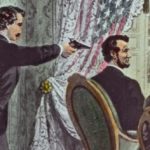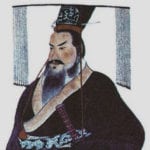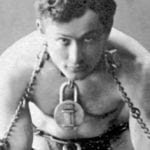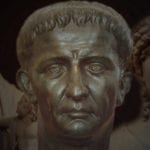 Music
Music  Music
Music  History
History 10 Less Than Jolly Events That Occurred on December 25
 Weird Stuff
Weird Stuff 10 Funny Ways That Researchers Overthink Christmas
 Politics
Politics 10 Political Scandals That Sent Crowds Into the Streets
 Weird Stuff
Weird Stuff Ten Bizarre Facts About The Doge Meme
 Our World
Our World 10 Ways Your Christmas Tree Is More Lit Than You Think
 Movies and TV
Movies and TV The 10 Coolest Stars to Set Sail on The Love Boat
 History
History 10 Things You Didn’t Know About the American National Anthem
 Technology
Technology Top 10 Everyday Tech Buzzwords That Hide a Darker Past
 Humans
Humans 10 Everyday Human Behaviors That Are Actually Survival Instincts
 Music
Music 10 Surprising Origin Stories of Your Favorite Holiday Songs
 History
History 10 Less Than Jolly Events That Occurred on December 25
 Weird Stuff
Weird Stuff 10 Funny Ways That Researchers Overthink Christmas
Who's Behind Listverse?

Jamie Frater
Head Editor
Jamie founded Listverse due to an insatiable desire to share fascinating, obscure, and bizarre facts. He has been a guest speaker on numerous national radio and television stations and is a five time published author.
More About Us Politics
Politics 10 Political Scandals That Sent Crowds Into the Streets
 Weird Stuff
Weird Stuff Ten Bizarre Facts About The Doge Meme
 Our World
Our World 10 Ways Your Christmas Tree Is More Lit Than You Think
 Movies and TV
Movies and TV The 10 Coolest Stars to Set Sail on The Love Boat
 History
History 10 Things You Didn’t Know About the American National Anthem
 Technology
Technology Top 10 Everyday Tech Buzzwords That Hide a Darker Past
 Humans
Humans 10 Everyday Human Behaviors That Are Actually Survival Instincts
5 Notable Alamo Deaths
Lasting from February 23 to March 6, 1836, the Battle of the Alamo was a pivotal event in the Texas Revolution. Following a siege that had lasted for 13 days, Mexican troops under President General Antonio López de Santa Anna launched an assault on the Alamo Mission near San Antonio de Béxar. With a strength of 2,400 soldiers to the Alamo Mission’s approximated force of 182-260 Texian defenders, all but two Texian defenders were killed (the casualties are estimated to be around 400-600 killed and wounded for the Mexican army). The merciless defeat and the cruelty of the Mexican general inspired both Texas settlers and adventurers from the United States to join the Texian Army. The revolution ended later that year on April 21, at the Battle of San Jacinto, where the Mexican army was defeated by the Texians. During the Battle of the Alamo, the Alamo Mission and San Antonio de Béxar became the final resting place for many. The list that follows is of five notable deaths of people who died during the Battle of the Alamo. Keep in mind that accounts of their deaths are at best, purported to be, and should not be considered definitive. This list borrows text from Wikipedia.

Born in North Carolina, Autry was an American merchant, poet and lawyer who volunteered for military service in the War of 1812 against the British. He marched to Wilmington, North Carolina, as a member of a volunteer militia company and later joined the United States Army at Charleston, South Carolina. He remained in Charleston in the company of Captain Long until the Treaty of Ghent was signed in 1815. Bad health forced Autry to quit farming and become a teacher. He moved to Hayesboro, Tennessee, in 1823 and studied law. In 1828 Autry was admitted to the bar in Nashville, Tennessee. He practiced law in Jackson, between 1831 and 1835 in a partnership with Andrew L. Martin. Autry and Martin later started an unsuccessful mercantile business in Nashville. He soon heard of the opportunities in Texas.
From Natchitoches, Louisiana on December 13 he wrote: “About 20 men from Tennessee formed our squad… The war [in Texas] is still going on favorably to the Texians, but it is thought that Santa Anna will make a descent with his whole force in the Spring, but there will be soldiers enough of the real grit in Texas by that time to overrun all of Mexico… We have between 400 and 500 miles to foot it to the seat of government, for we cannot get horses, but we have sworn allegiance to each other and will get along somehow.” He was in Nacogdoches, Texas, on January 13, 1836, where he enlisted in the Volunteer Auxiliary Corps. His letter to his wife written on that date indicated that he had set out for Washington-on-the-Brazos with David Crockett and others under the command of Capt. William B. Harrison. He arrived in San Antonio de Béxar with this company on February 9 and joined the Alamo garrison under the command of Lt. Col. William Barrett Travis. After the siege lasting 13 days, Autry was killed with the rest of the Alamo garrison after the Mexican army stormed it on March 6, 1836.
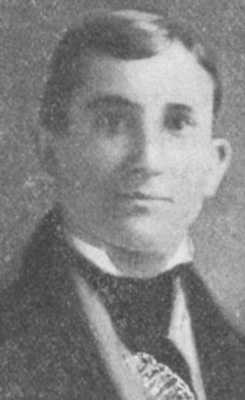
James Bonham was an outspoken soldier in the Texas Revolution. But even previously, his outspokenness got him into sticky situations. He was expelled from his college his senior year along with the rest of his class for leading a protest over harsh attendance regulations and the poor food served at the college boardinghouse. In 1830, Bonham practiced law in Pendleton, but was found in contempt of court after caning an attorney who had insulted one of Bonham’s clients. When ordered to apologize by the sitting judge, he refused and threatened to tweak the judge’s nose. Bonham was sentenced to ninety days for contempt of court. He also openly condemned Andrew Jackson and Washington politicians, but his bold opinions earned him the position of Lieutenant Colonel. Bonham organized a militia in Mobile, Alabama that went on to serve in the Texas Revolution in 1834.
On January 19, 1836 Bonham traveled to San Antonio de Béxar and the Alamo along with James Bowie. On January 26 he was appointed one of a committee of seven to draft a preamble and resolutions on behalf of the garrison in support of Governor Henry Smith. On February 1 he was an unsuccessful candidate in the election of delegates to represent the Béxar garrison at the Texas constitutional convention. He was sent to obtain aid for the garrison, visiting Goliad, which was unable to provide assistance. Bonham returned to the Alamo on March 3, bearing through the Mexican lines and the ongoing siege with a letter from Robert McAlpin Williamson assuring Travis that help was on its way and urging him to hold out. Bonham died three days later on March 6, 1836. He is believed to have died manning one of the cannons in the interior of the Alamo chapel.
The town of Bonham, Texas, is named for him and in World War II, the United States liberty ship SS James B. Bonham was named in his honor.

James Bowie was an American pioneer, land speculator, and soldier who played a prominent role in the Texas Revolution. Stories of him as a fighter and frontiersman, both real and fictitious, have made him a legendary figure in Texas history and a folk hero of American culture. Bowie was born in Kentucky, but spent most of his life in Louisiana, where he was raised and later worked as a land speculator. His rise to fame began in 1827 on reports of the Sandbar Fight. What began as a duel between two other men who agreed to a draw deteriorated into a melee in which Bowie, having been shot and stabbed, killed the sheriff of Rapides Parish with a large knife. This, and other stories of Bowie’s prowess with a knife, led to the widespread popularity of the Bowie knife. Whether or not he invented the knife, is a matter of speculation, as many experts attribute the invention of the Bowie knife to notable knife-makers of the time.
Bowie’s reputation was cemented by his role in the Texas Revolution. After moving to Texas in 1830, Bowie became a Mexican citizen and married the daughter of the vice governor of the province. His fame in Texas grew following his failed expedition to find the lost San Saba mine, during which his small party repelled an attack by a large Indian raiding party. At the outbreak of the Texas Revolution, Bowie joined the Texas militia, leading forces at the Battle of Concepción and the Grass Fight. In January 1836, he arrived at the Alamo, where he commanded the volunteer forces until an illness left him bedridden. Bowie died with a majority of other Alamo defenders on March 6. Despite conflicting accounts of the manner of his death, the most accurate account is considered the most reliable as it is believed that he died in his bed after emptying his pistols into several Mexican soldiers.
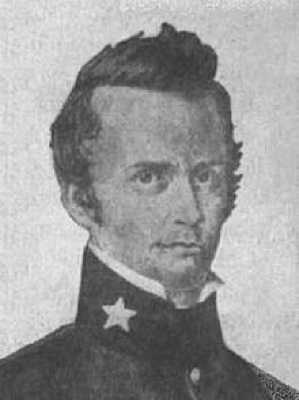
In early 1836, Governor Henry Smith ordered William Travis to raise a company to reinforce the Texans at the Alamo Mission in San Antonio de Béxar. Travis considered disobeying his orders, writing to Smith: “I am willing, nay anxious, to go to the defense of Béxar, but sir, I am unwilling to risk my reputation… by going off into the enemy’s country with such little means, so few men, and with them so badly equipped.” Nonetheless, Travis arrived on February 3 in San Antonio de Béxar with eighteen men as reinforcements. On February 12, as the next highest ranking officer, Travis became the official commander of the Alamo garrison. He took command of the regular soldiers from Col. James C. Neill, of the Texian army. Neill had to leave to care for his ill family, but he promised to be back in twenty days. He shared command with James Bowie, who would command the volunteers as Travis commanded the regulars.
A few days before the final Mexican assault, it was reported that Travis gathered all of the Alamo’s defenders in the main plaza of the fort. Announcing that reinforcements would not be coming, Travis unsheathed his sword and drew a line in the dirt. He then told those men who were willing to stay and die with him to cross the line; those who wanted to leave could do so without shame. All but two soldiers crossed the line, and James Bowie, who was confined to a cot with typhoid, asked to be carried across the line. One of the two soldiers was Moses Rose, a French veteran of the Napoleonic Wars. Rose later declared, “By God, I wasn’t ready to die,” scaled a wall that night and escaped, thus preserving the story of Travis’s line in the sand.
On March 6, 1836, following a thirteen-day siege, Travis was killed in a predawn attack along with approximately 188-250. The Mexicans overran the fort, surrounded it, used ladders to climb over the walls and broke down the fort’s defenses. There are reports that Travis died early in the assault, of a single gunshot wound to the forehead while defending the north wall. A freed former slave of Travis, who was present during the final assault as a noncombatant, stated afterward that he saw Travis stand on the wall and fire into the attackers. He saw Travis shoot and kill a Mexican soldier climbing over the wall from a ladder, with Travis falling immediately afterward. This is the only dependable account of Travis’ death. When Santa Anna came into the fort he asked the alcalde of San Antonio de Béxar, Francisco A. Ruiz, to identify the bodies of the rebel leaders to him. Ruiz later said that the body of Travis was found on a gun carriage on the north wall.
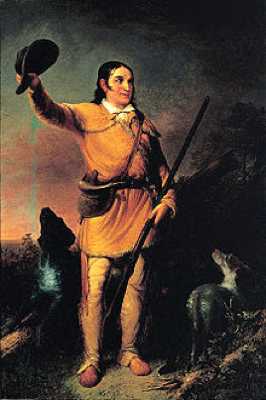
Davy Crocket, an American congressman, frontiersman, soldier and folk hero, opposed many of the policies of President Andrew Jackson, most notably the Indian Removal Act. Crockett’s opposition to Jackson’s policies led to his defeat in the 1834 elections, prompting his angry departure to Texas shortly thereafter. He arrived in Nacogdoches, Texas, in early January 1836. On January 14, 1836, Crockett and 65 other men signed an oath before Judge John Forbes to the Provisional Government of Texas for six months: “I have taken the oath of government and have enrolled my name as a volunteer and will set out for the Rio Grande in a few days with the volunteers from the United States.” On February 6, Crockett and about five other men rode into San Antonio de Béxar and camped just outside the town. They were later greeted by co-commander James Bowie.
On February 23, the Mexican army arrived. The Mexican soldiers immediately initiated a siege. Santa Anna ordered his artillery to keep up a near-constant bombardment. The guns were moved closer to the Alamo each day, increasing their effectiveness. On February 25, 200-300 Mexican soldiers crossed the San Antonio River and took cover in abandoned shacks approximately 90 yards (82m) to 100 yards (91m) from the Alamo walls. The soldiers intended to use the huts as cover to establish another artillery position, although many Texians assumed that they actually were launching an assault on the fort. Several men volunteered to burn the huts. To provide cover, the Alamo cannons fired grapeshot at the Mexican soldiers, and Crockett and his men fired rifles, while other defenders reloaded extra weapons for them to use in maintaining a steady fire. Within two hours, the battle was over, and the Mexican soldiers retreated. Inside the Alamo, the stores of powder and shot were limited. On February 26, Travis ordered the artillery to stop returning fire so as to conserve precious ammunition. Crockett and his men were encouraged to keep shooting, as they were unusually effective.
The siege ended on March 6, when the Mexican army attacked just before dawn while the defenders were sleeping. The daily bombardment by artillery had been suspended, perhaps a ploy to encourage the natural human reaction to a cessation of constant strain. But the garrison awakened and the final fight began. Most of the noncombatants gathered in the church sacristy for safety. According to Dickinson, before running to his post, Crockett paused briefly in the chapel to say a prayer. When the Mexican soldiers breached the north outer walls of the Alamo complex, most of the Texians fell back to the barracks and the chapel, as previously planned. Crockett and his men were too far from the barracks to take shelter and were the last remaining group in the mission to be in the open. The men defended the low wall in front of the church, using their rifles as clubs and relying on knives, as the action was too furious to allow reloading. After a volley and a charge with bayonets, Mexican soldiers pushed the few remaining defenders back toward the church. The Battle of the Alamo lasted almost 90 minutes.
Within a few hours of the final gunshots being fired, Santa Anna ordered a company of soldiers to gather wood and burn all the Texians’ bodies. The bodies were taken to a nearby stand of trees where they were stacked together and wood piled on top. By five o’clock that evening, the bodies of Travis, Crockett, Autry, Bowie and Bonham were burned along with the other defenders.
